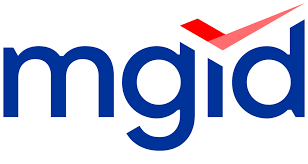The Demise Of The Disruptors: Can Digital Advertising Revive Rebellious Publishers?
How can digital advertising support diverse and independent journalism?


As tough as this year has been for legacy publications, it has been disastrous for their alternative, youth-oriented counterparts. Vice Media, a digital publishing giant once worth billions and a favorite of Rupert Murdoch, was acquired by its creditors for only $350 million, shortly after announcing it had filed for bankruptcy.
Vice’s misfortunes were shared by other publishers that aimed to disrupt mainstream news media. Buzzfeed shut down its award-winning news division and pinned its future hopes on AI, while Gal-Dem, an online and print magazine focused on Black women and nonbinary people, closed entirely. As economic challenges mount across the globe and put downward pressure on ad spend growth, publishers with an alternative or non-mainstream offering are struggling to survive.
Such publications often have a love/hate relationship with digital advertising, especially via programmatic platforms, citing concerns over fair remuneration, user experience, and visibility over supply chains. On the other end, advertisers might neglect alternative sites on brand safety grounds. The open web is one of the few places — if not the only place — that alternative media can thrive, so how can digital advertising support diverse and independent journalism?
How disruptor publications became trapped by walled gardens
There were many factors that led to the downfall of disruptor media, such as the precarious “scale and worry about profit later” model that kept creditor and VC money flowing during the era of low interest rates.
But equally disastrous was disruptor media hitching its wagon too closely to big tech and social platforms in their pursuit of ever-greater scale and proximity to young audiences. These walled gardens are too big to ignore, and few publishers can afford to cut the likes of Google or Meta from their advertising and audience expansion strategies, but an overreliance on walled gardens comes with risks of its own.
Such platforms often demonstrate open hostility to news publishers, especially when the question of revenue sharing comes up, as seen recently when Meta pulled news content from Facebook in Canada after the country mandated content fees. Google, meanwhile, was accused of rigging ad auctions at publishers’ expense last year, and this year is in hot water for violating its own standards in 80% of its video ad placements, adding another in a long string of questions over the company’s commitments to transparency.
Overnight algorithm changes can also suddenly see revenues mysteriously dry up, or force publishers to pivot their strategies to keep up. And throughout all of this, the mysterious black box models operated by big tech and social platforms deny publishers any ownership of the audiences and insights within them. Instead, publishers have no choice but to trust that the companies running these walled gardens are fairly marking their own homework.
For all its challenges, the open web is the only place that alternative publishers can find the freedom and independence they need to shape their own destinies. On their own sites, alternative publishers can take advantage of the rich ecosystem of innovative and independent ad tech solutions (or build their own) to retain full control over their data, audiences, and advertising offerings. This can provide a secure base from which walled gardens can be responsibly explored for revenue diversification and audience expansion, without handing over too much control.
Ad tech innovations are creating a more equitable open web ad ecosystem
Unfortunately, it’s not just the walled gardens that have a transparency issue. The ANA’s audit of the programmatic supply chain uncovered $20 billion in waste, representing an astonishing 23% of media investment. Much of this waste is a result of spend going to low quality, made for advertising sites — spend which could be supporting the next generation of alternative publications.
To combat programmatic’s transparency issues, there has been a rise in private marketplaces (PMPs) and programmatic guaranteed deals that offer a more direct connection between advertisers and publishers. By offering advertisers exclusive access to their inventory in exchange for guaranteed spend, alternative publishers can secure a reliable revenue stream while both parties enjoy total transparency over campaign performance.
Brand safety is another challenge for alternative publishers on the open web. Heavy handed brand safety blocklists disproportionately affect hard news and minority-centered content, which are often focuses for alternative publishers. But the rapid advancement of AI technology has created a new generation of contextual brand safety solutions that are able to understand the nuances of content. Contextual brand safety prevents advertisers from excluding legitimate publishers, which in turn can monetize more of their content.
There have also been advancements in both advertising formats and the metrics used to gauge their effectiveness. Lightweight, native ad formats integrate seamlessly into the page to significantly improve the user experience, which is especially vital for alternative publications seeking to nurture and grow niche audiences. Attention metrics, meanwhile, are making it easier for publications to prove the value of their inventory and refine placements to maximize engagement.
Finally, there are the suite of tools that allow publications to collate, package, and surface their first party audience data to activate on DSPs and PMPs. This provides high value, targetable, and addressable audiences for advertisers, which will become especially critical as third-party cookies are retired. Most importantly, these segments belong solely to the publisher, allowing alternative publications to reliably monetize their audiences without handing the keys over to walled gardens.
It may be too late for Vice to return to its glory days, but the next generation of disruptors will benefit from an open web that is overcoming its shortcomings through rapid technological progress. Ad tech innovators must continue to support an equitable digital advertising supply chain that is competitive with walled gardens, as the diversity of the publishing industry is at stake.














